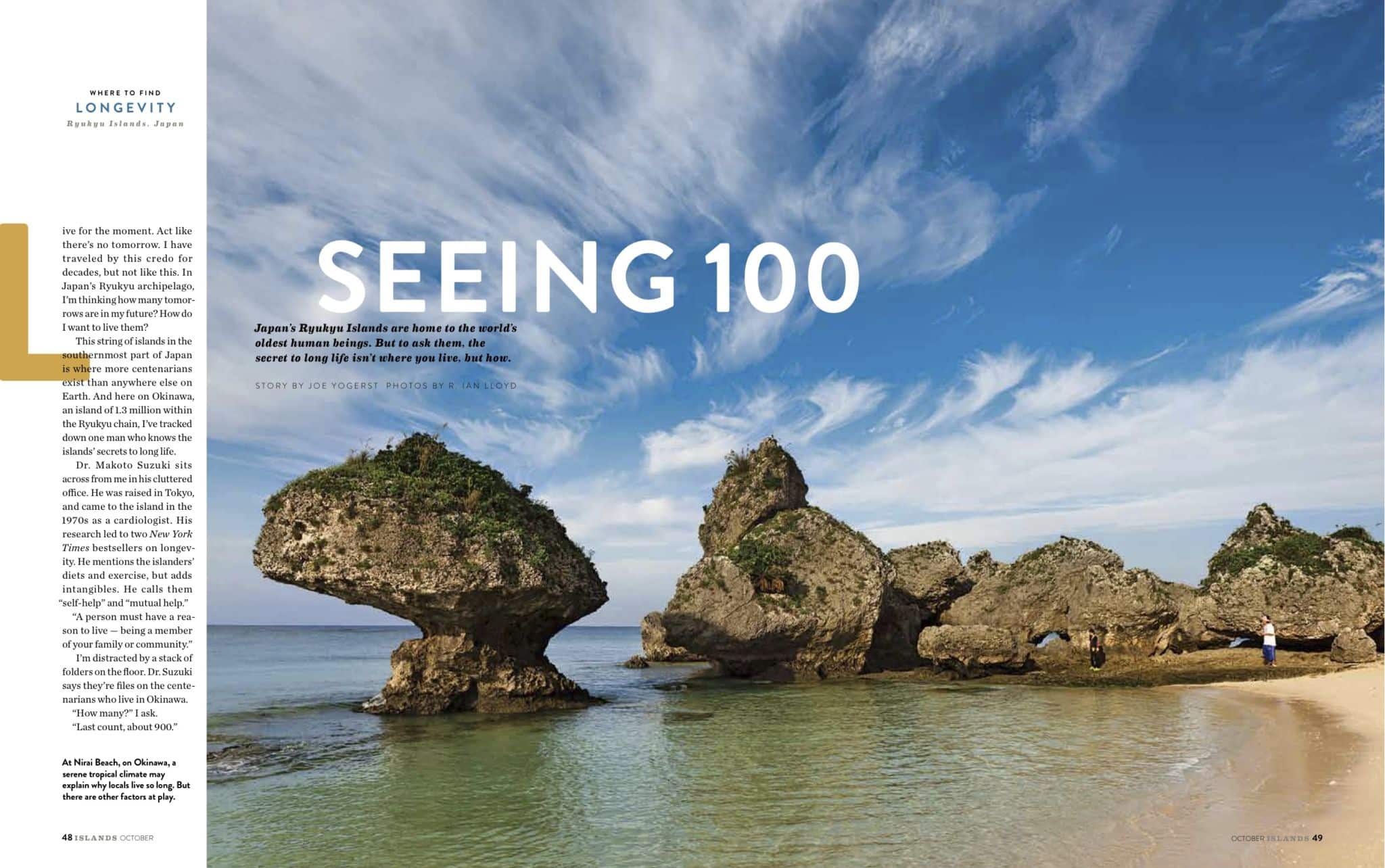Travel Guide: How To Do The Ryukyu Islands
Day 1: Orient Yourself
- After arriving at Naha's modern international airport after a Japan Air Lines flight across the Pacific, check into the swank Nikko Alivila resort on the island's western shore.
- If you're feeling jetlagged, sack out around the pool or the resort's private white-sand strand.
- After lunch, head back into Naha and explore medieval Shuri Castle, the sprawling hilltop citadel where the Ryukyu kings were based for more than 500 years. The architecture, interiors and relics reflect the unique blend of Japanese and Chinese influences that comprise Ryukyu culture.
- Fast forward into modern island history by descending into the Japanese Navy Underground Headquarters, a warren of tunnels where the high command directed the battle against the American invaders in the spring of 1945. Shrapnel holes in the walls were caused by the grenades that Japanese officers used to commit seppuku.
- Rounding out your introduction to Ryukyu culture, eat dinner at Suitenrou restaurant in downtown Naha where the upstairs dining room serves ample portions of typical Okinawan foods during performances of classical Ryukyu song and dance.
Day 2: Meet a Buffalo
- Get up close and personal with a water buffalo at Ryukyu Mura, an outdoor history museum with cultural performances, habu snake show and elder artists and craftsmen doing their thing.
- Buy fresh sushi and sashimi at roadside farmer's market in Kyoda and dine al fresco on one of the nearby beaches.
- Explore underwater Okinawa on a dive trip to the reefs around one of the small, outlying islands like Kerama or Aguni. (Click here for a list of local dive operators including those who speak English.)
- Eat dinner at Ura-Niwa, a rowdy izayaka restaurant in Onna-son that features traditional Okinawan music, dance and food. Their slow-simmer pork is to die for. Also try the ishigaki steak, ocean grapes seaweed and goya chanpuru stir fry.
Day 3: Get Moving
- Fly from Okinawa to Amami Oshima on RAC airlines. Check into the beachfront Bashayamamura resort, about a 15-minute drive from the airport. Ask for one of the rooms on the top floor of the new block.
- Hit the waves at Tebiro Beach, one of Japan's leading surf spots. If you didn't bring your own board, rent one at Kabo or go bodysurfing.
- Kayak the Black Current swamps, the world's northernmost mangroves. Ask your guide to paddle to the secluded spot in the middle of the swamp where in bygone days they brought old people to die.
-
On your way back to the resort, detour to Kasari Town on the north coast and dig into a hot bowl of Amami's favorite dish – keihan chicken and rice soup – at one of the tatami tables in Minatoya restaurant.
Day 4: Go Wild
-
Look for habu snakes, the rare and endangered Amami rabbit and other indigenous creatures on an early morning nature hike with local guide Saijo Kazuhisa (tel 0997-54-4991) in the Kinsakubaru Virgin Forest sanctuary.
- On your way to the airport pop into the excellent Tanaka Isson Memorial Art Museum, which showcases the work of a local nature artist who became a national treasure.
- Hop a JAC flight or local ferry to Tokunoshima island and check into the Hotel Sunset Resort (tel 0997-85-2349), hub of local action sports like scuba and triathlon.
- Walk the rocky shoreline at Mushirose, an otherworldly jumble of giant boulders, weird-shaped rocks and giant waves that roll in across the East China Sea.
Day 5: Meet the (Old) Folks
- Explore the sea caves and tide pools at Innojo-futa and nearby Cape Intabu. History buffs can peruse the striking modern monument that honors the memory of the 2,000 sailors who perished on the Japanese battleship Yamato, which sank nearby in 1945.
- Head for south central Tokunoshima, the villages where some of Japan's oldest people reside. Eat lunch in the thatched-roof communal restaurant in Inutabu, where the spread will likely include green papaya, seaweed, pig's feet and tofu. Ask to take a peek at the village saltworks.
- If you're visiting January, May or October, try to catch a traditional bloodless bullfight (tagyu), where the animals are pitted against each other in a ring surrounded by fanatical islanders.
- On your way to the airport, stop off at the indoor farmer's market in Isen town and buy some of the organic artisanal foods produced on the island like sea salt and sugar cane vinegar. The market also hawks postcards, books, T-shirts and bullfighting DVDs.
The Facts
PASSPORT NEEDED > Yes
CURRENCY > Japanese Yen
OFFICIAL LANGUAGE > Japanese ** **
WHEN TO GO > Summer when the ocean water is warm enough to swim and scuba
LOCAL DRINK > Shochu
